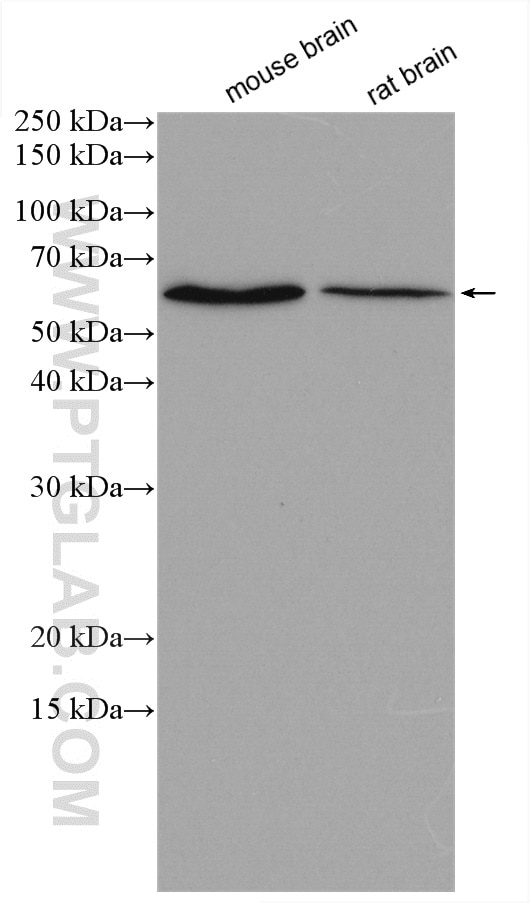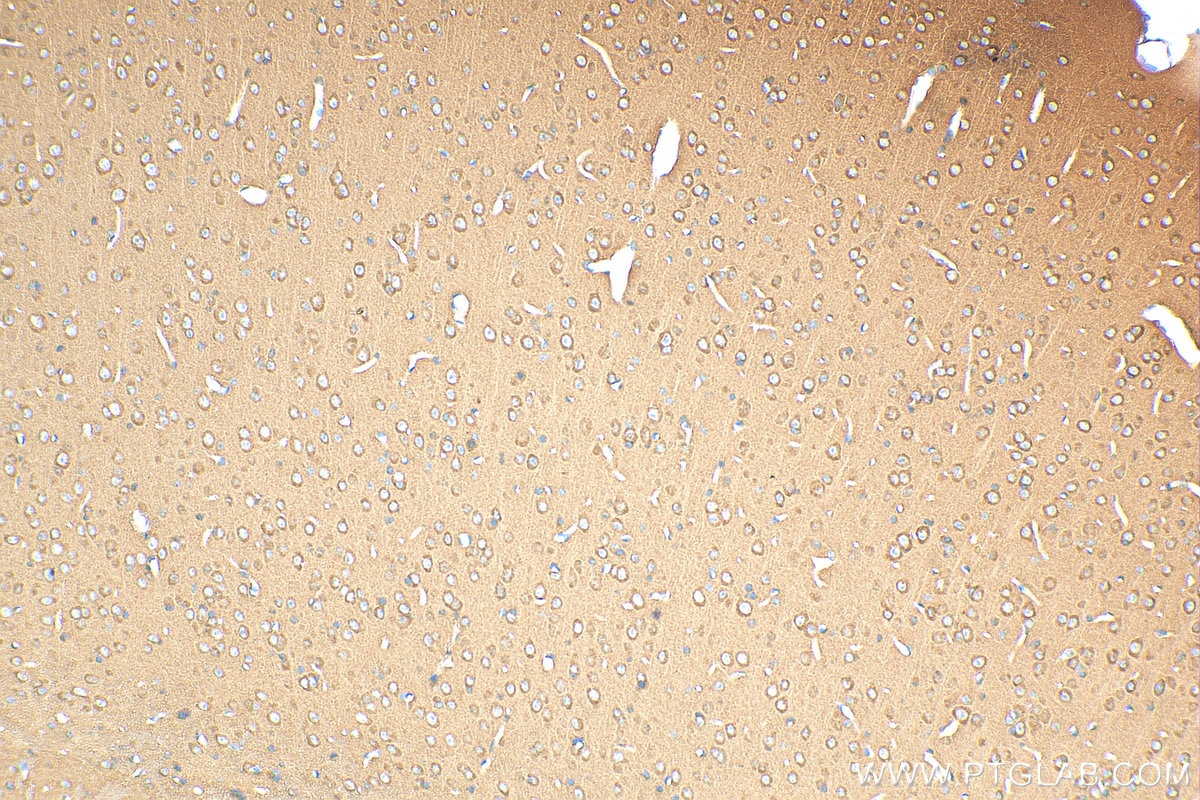Tested Applications
| Positive WB detected in | mouse brain tissue, rat brain tissue |
| Positive IHC detected in | mouse brain tissue Note: suggested antigen retrieval with TE buffer pH 9.0; (*) Alternatively, antigen retrieval may be performed with citrate buffer pH 6.0 |
Recommended dilution
| Application | Dilution |
|---|---|
| Western Blot (WB) | WB : 1:500-1:1000 |
| Immunohistochemistry (IHC) | IHC : 1:50-1:500 |
| It is recommended that this reagent should be titrated in each testing system to obtain optimal results. | |
| Sample-dependent, Check data in validation data gallery. | |
Published Applications
| IHC | See 2 publications below |
Product Information
20916-1-AP targets WDR37 in WB, IHC, ELISA applications and shows reactivity with human, mouse, rat samples.
| Tested Reactivity | human, mouse, rat |
| Cited Reactivity | human, mouse |
| Host / Isotype | Rabbit / IgG |
| Class | Polyclonal |
| Type | Antibody |
| Immunogen |
CatNo: Ag15112 Product name: Recombinant human WDR37 protein Source: e coli.-derived, PGEX-4T Tag: GST Domain: 1-244 aa of BC018044 Sequence: MPTESASCSTTRQTKQKRKSHSLSIRRTNSSEQERTGLPRDMLEGQDSKLPSSVRSTLLELFGQIEREFENLYIENLELRREIDTLNERLAAEGQAIDGAELSKGQLKTKASHSTSQLSQKLKTTYKASTSKIVSSFKTTTSRAACQLVKEYIGHRDGIWDVSVAKTQPVVLGTASADHTALLWSIETGKCLVKYAGHVGSVNSIKFHPSEQLALTASGDKTAHIWRYAVQLPTPQPVADTSVS Predict reactive species |
| Full Name | WD repeat domain 37 |
| Calculated Molecular Weight | 494 aa, 55 kDa |
| Observed Molecular Weight | 55-60 kDa |
| GenBank Accession Number | BC018044 |
| Gene Symbol | WDR37 |
| Gene ID (NCBI) | 22884 |
| RRID | AB_10695501 |
| Conjugate | Unconjugated |
| Form | Liquid |
| Purification Method | Antigen affinity purification |
| UNIPROT ID | Q9Y2I8 |
| Storage Buffer | PBS with 0.02% sodium azide and 50% glycerol, pH 7.3. |
| Storage Conditions | Store at -20°C. Stable for one year after shipment. Aliquoting is unnecessary for -20oC storage. 20ul sizes contain 0.1% BSA. |
Background Information
The function of WDR37 remains largely unknown. Catalog#20916-1-AP is a rabbit polyclonal antibody raised against the full-length of human WDR37. The MW of this protein is 55 kDa, and this antibody specially recognises the 55 kDa protein.
Protocols
| Product Specific Protocols | |
|---|---|
| IHC protocol for WDR37 antibody 20916-1-AP | Download protocol |
| WB protocol for WDR37 antibody 20916-1-AP | Download protocol |
| Standard Protocols | |
|---|---|
| Click here to view our Standard Protocols |
Publications
| Species | Application | Title |
|---|---|---|
ACS Nano Graphene Oxide Causes Disordered Zonation Due to Differential Intralobular Localization in the Liver. | ||
Front Immunol An E3 ubiquitin-proteasome gene signature for predicting prognosis in patients with pancreatic cancer |






